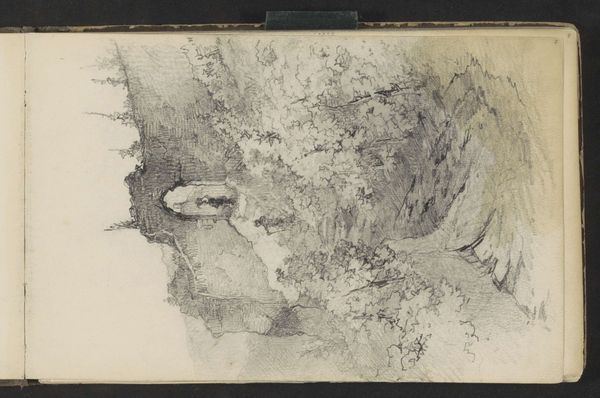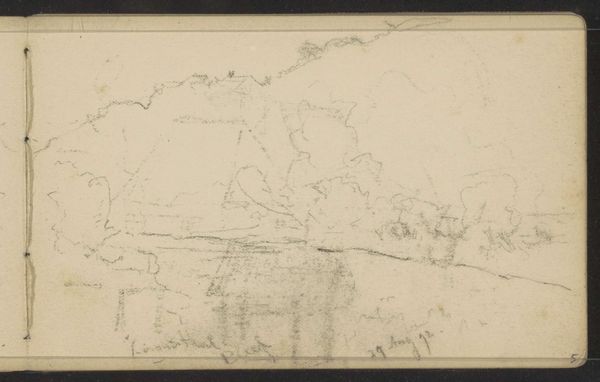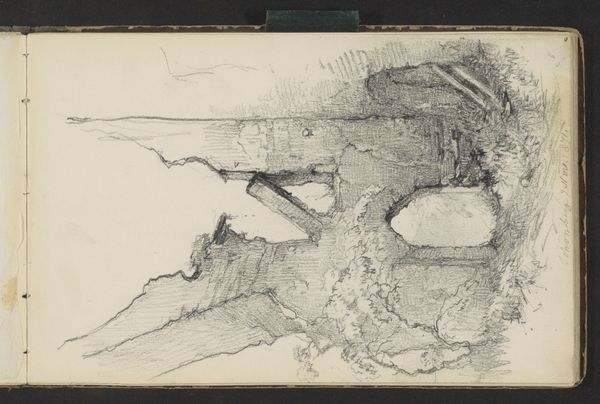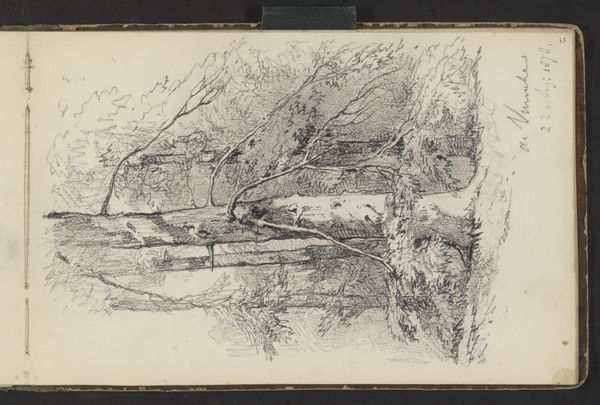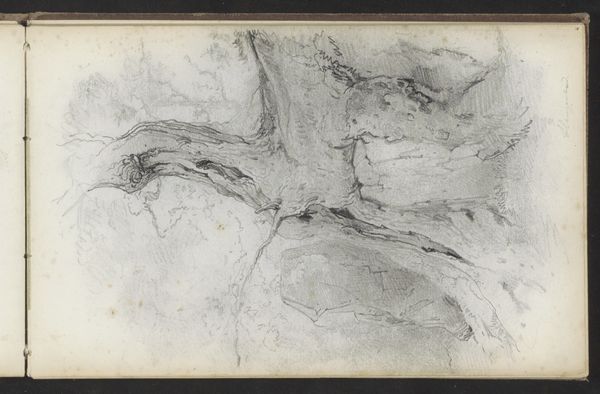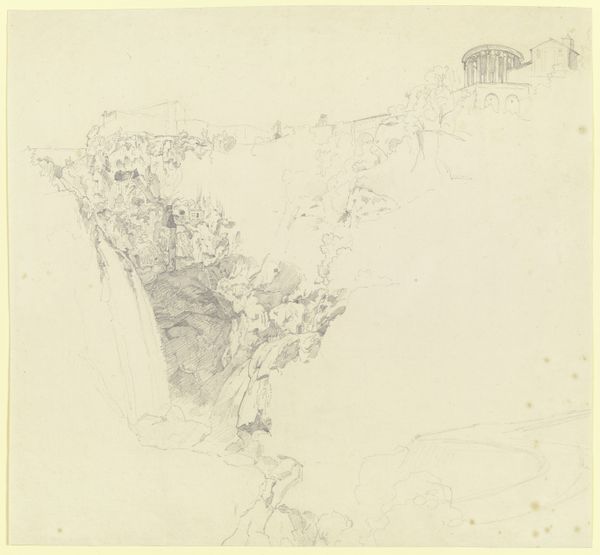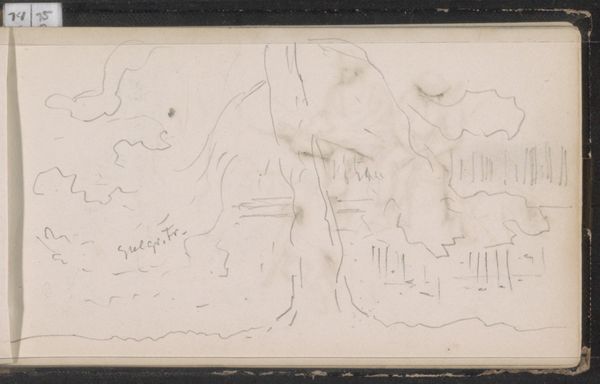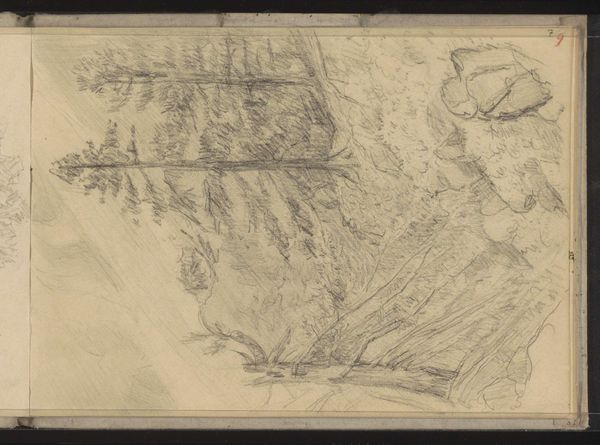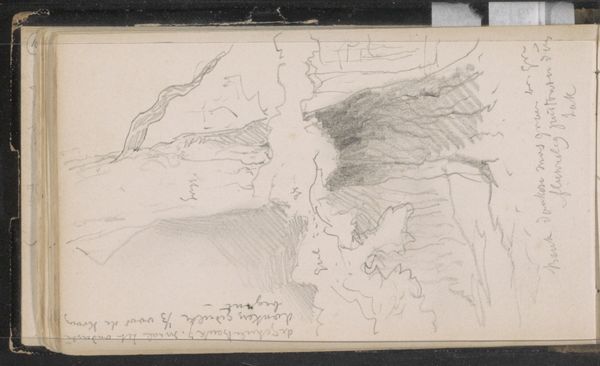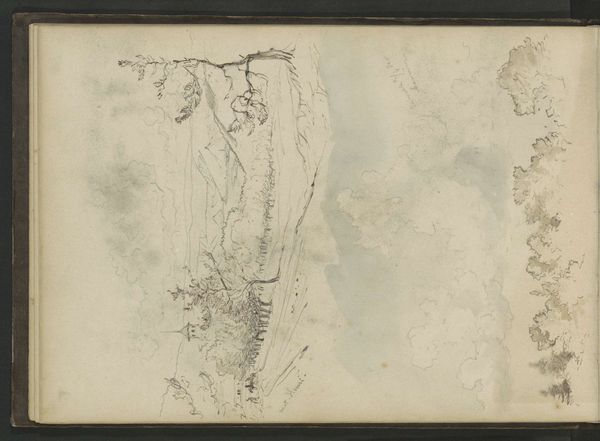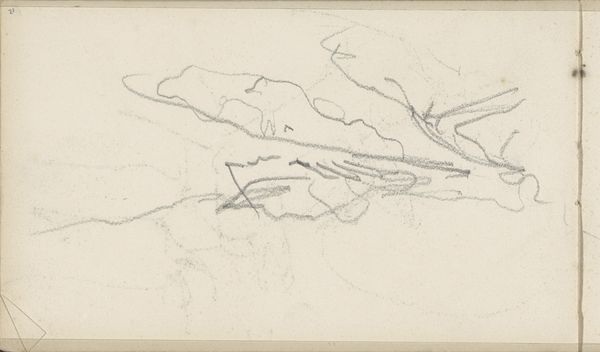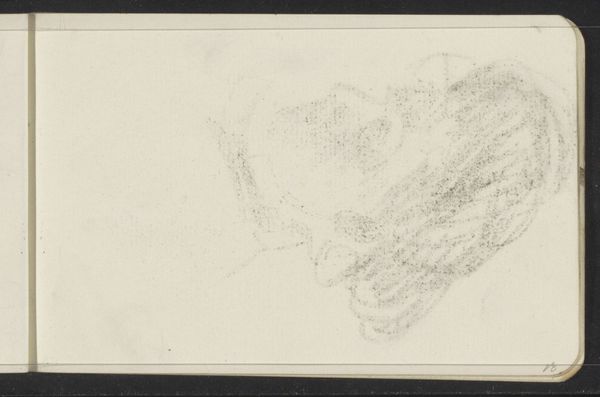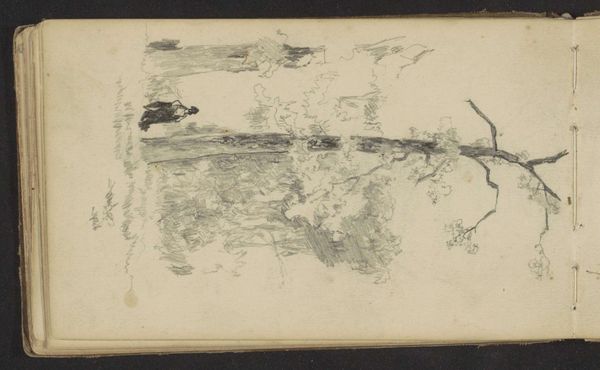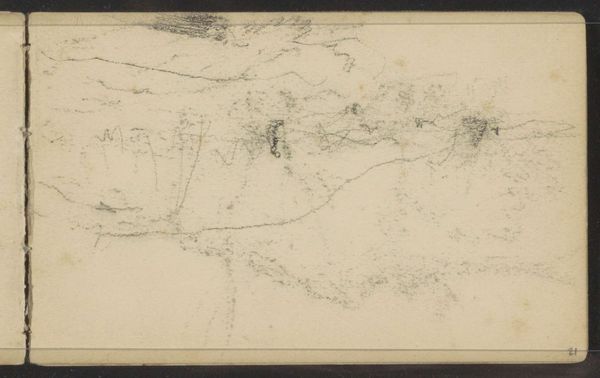
drawing, pencil
#
drawing
#
landscape
#
coloured pencil
#
mountain
#
pencil
#
sketchbook drawing
Copyright: Rijks Museum: Open Domain
Curator: Before us, we have "Mountainous Landscape with a Stone Tower beside a Valley," a pencil and colored pencil drawing, crafted around 1871-1878 by Maria Vos. Editor: Wow. My first thought is quiet intensity. Look at the precision, almost forensic in its detail, then that dissolves into these ghostly mountains. Like memory fading, you know? Curator: It's intriguing you say that, because Vos' work, especially her landscapes, often explores the tensions between objective observation and subjective experience within natural spaces. Considering this period, what might a woman artist hope to observe about landscape or about this stone tower, perhaps exploring themes of endurance? Editor: Mmm, maybe this tower is like an idea or ideal: built to last, standing watch but also a bit lonely. And the wispy mountains could be possibilities... looming but indistinct, still forming. What did you want to call out about this drawing? Curator: I wanted to point out the subtle yet powerful social commentary embedded within this picturesque scene. Vos created this work during a period when the representation of nature became intertwined with ideas of national identity and the picturesque. Landscape traditions largely ignored the lives of ordinary people, those whose labor shaped these spaces, and instead focused on romantic ideals. So I wonder, in this very specific choice to depict a 'ruined tower,' if Vos invites viewers to contemplate these questions. Editor: I can dig that. It hits differently when you consider that angle, not just pretty scenery but a dialogue about what it means to "belong" to a landscape, who gets seen, and how nature can carry so much weight in the hands of… well, someone like us trying to make sense of it all! You feel me? Curator: Completely. Her visual language implicitly acknowledges that absence as a powerful presence in the construction of cultural and national narratives. The under-representation of labor and the glorification of untouched landscapes both contribute to larger, historical biases and omissions within landscape paintings. Editor: That's something else I feel, because it's there! When I leave now and see the same works I usually pass without more thoughts in the halls around us I am quite sure they won't be as 'innocent' as they looked at me the last time! Thanks! Curator: Yes, it is important that art should urge its audience to engage in thoughtful examination, questioning entrenched conventions and cultural assumptions. And I think Maria Vos definitely provides it.
Comments
No comments
Be the first to comment and join the conversation on the ultimate creative platform.
